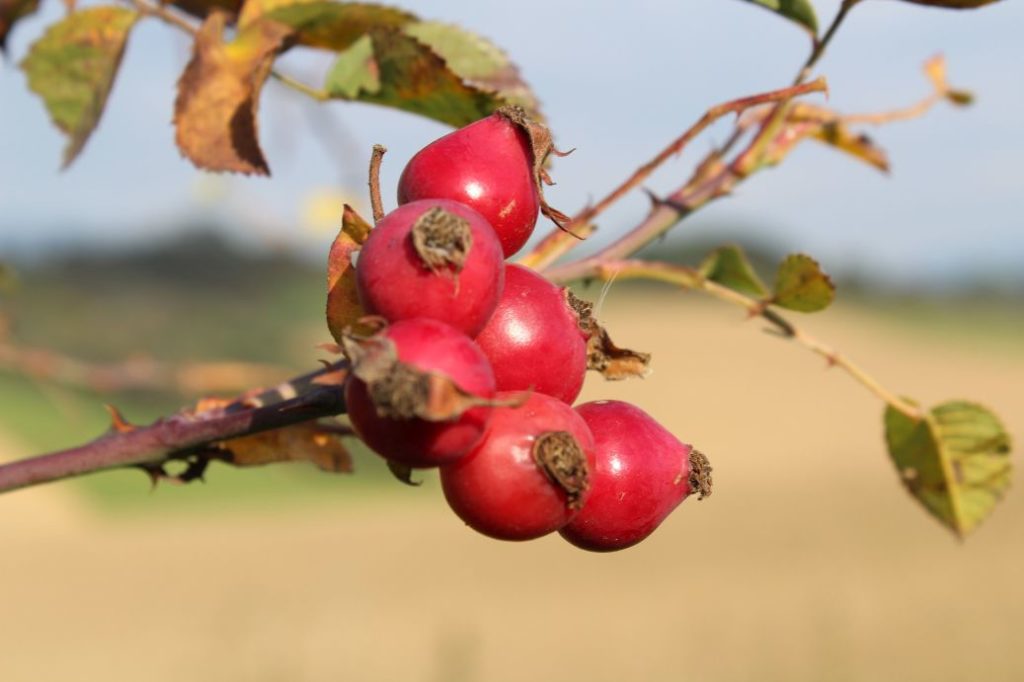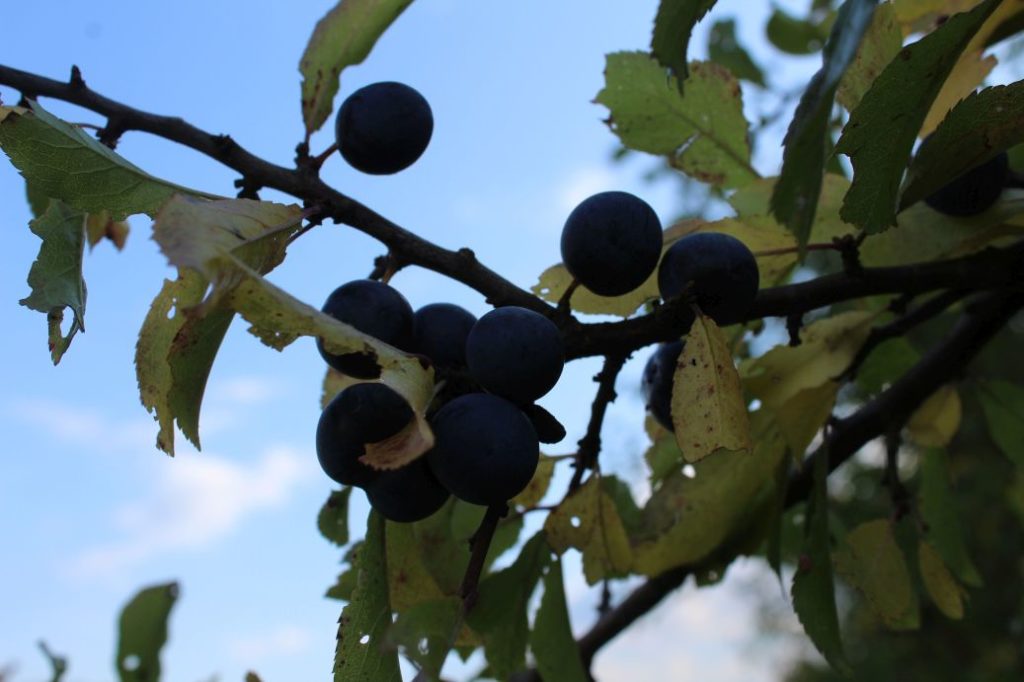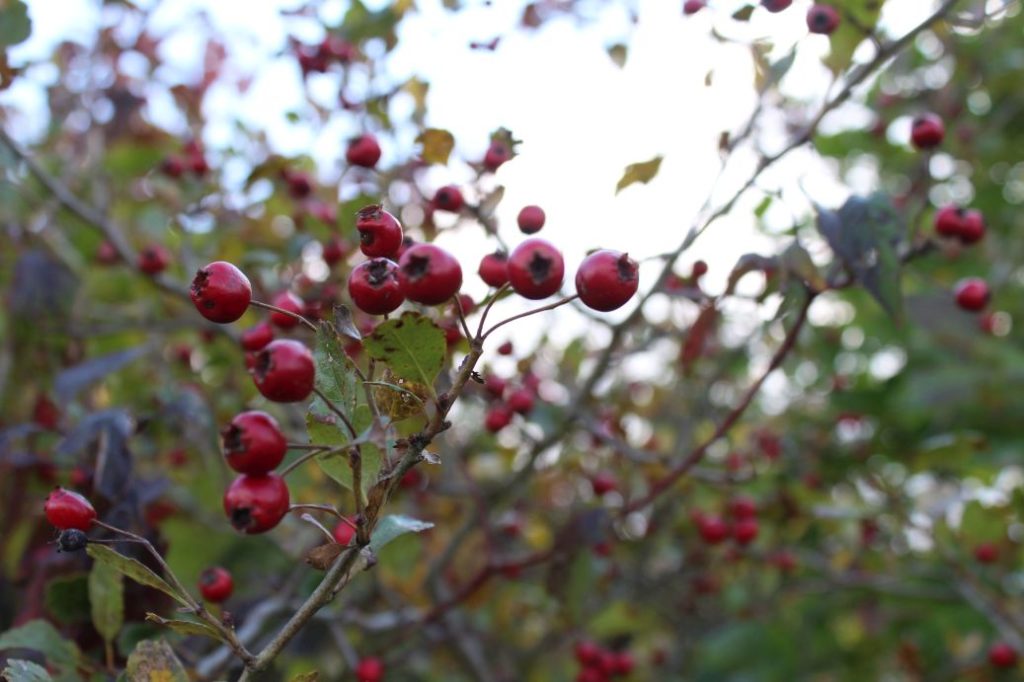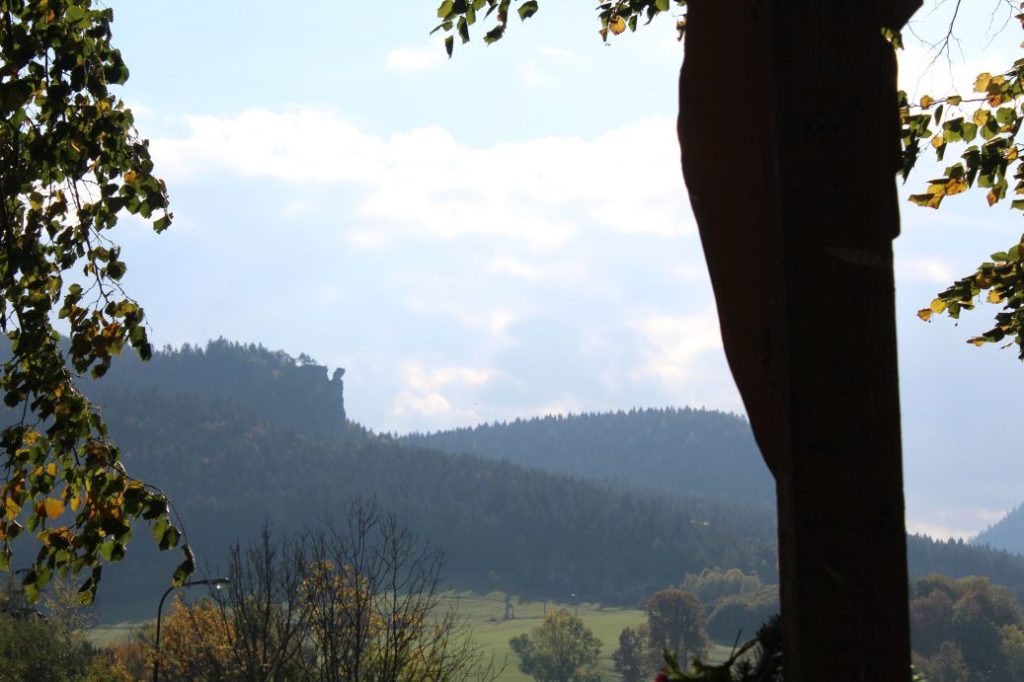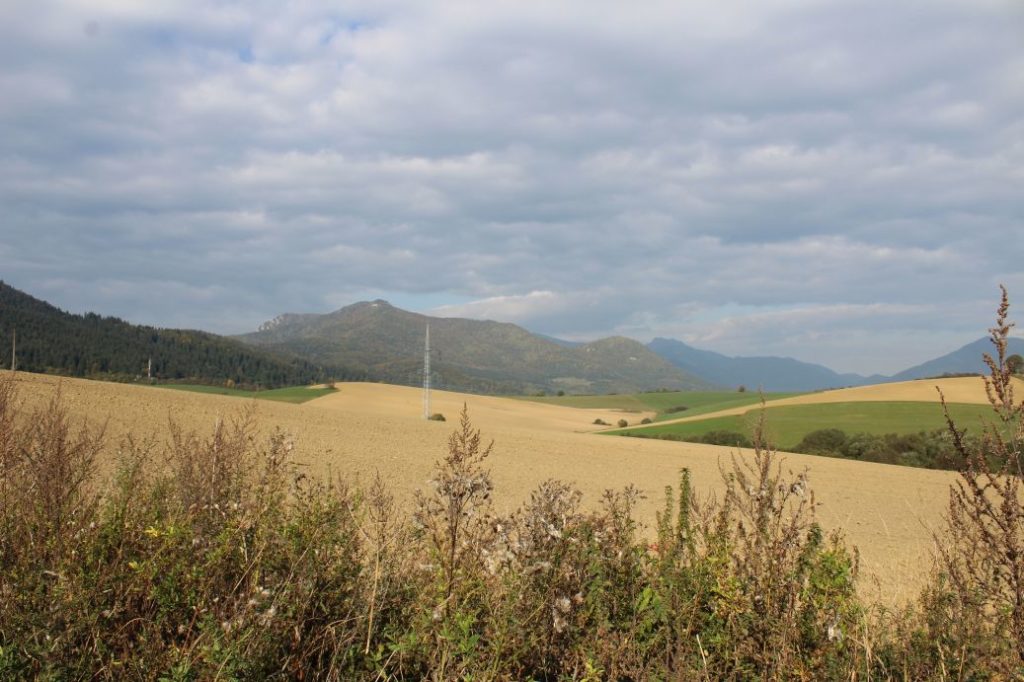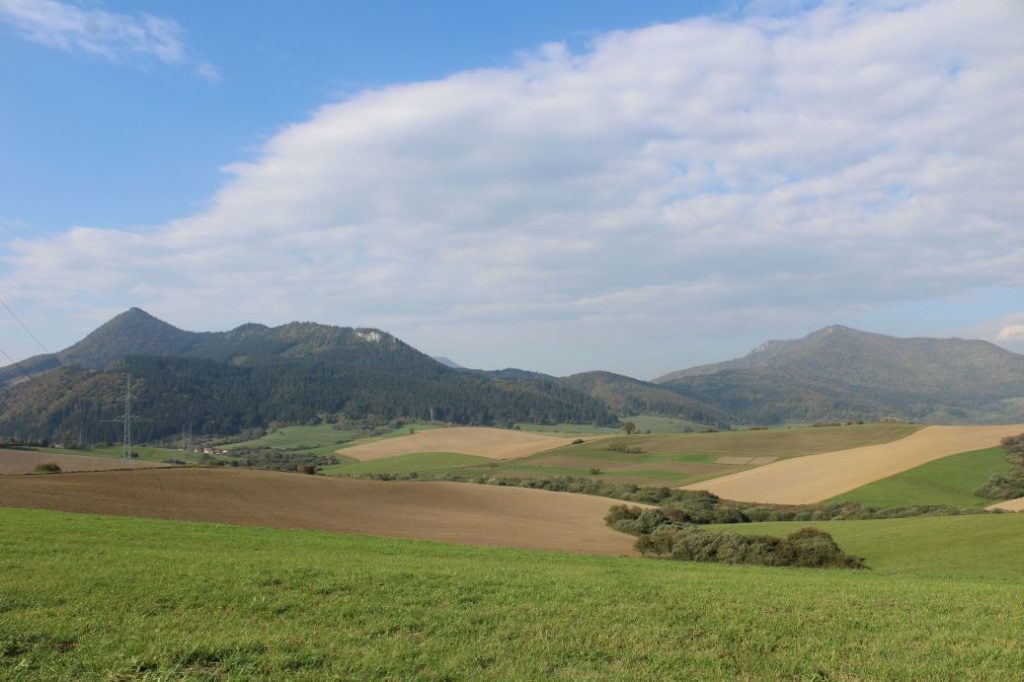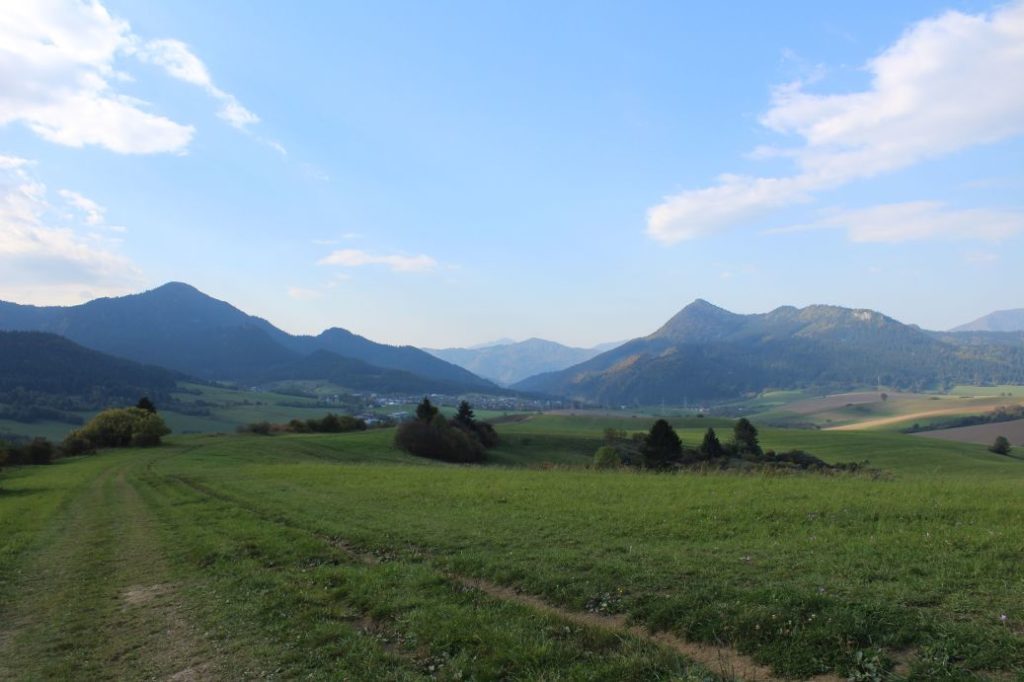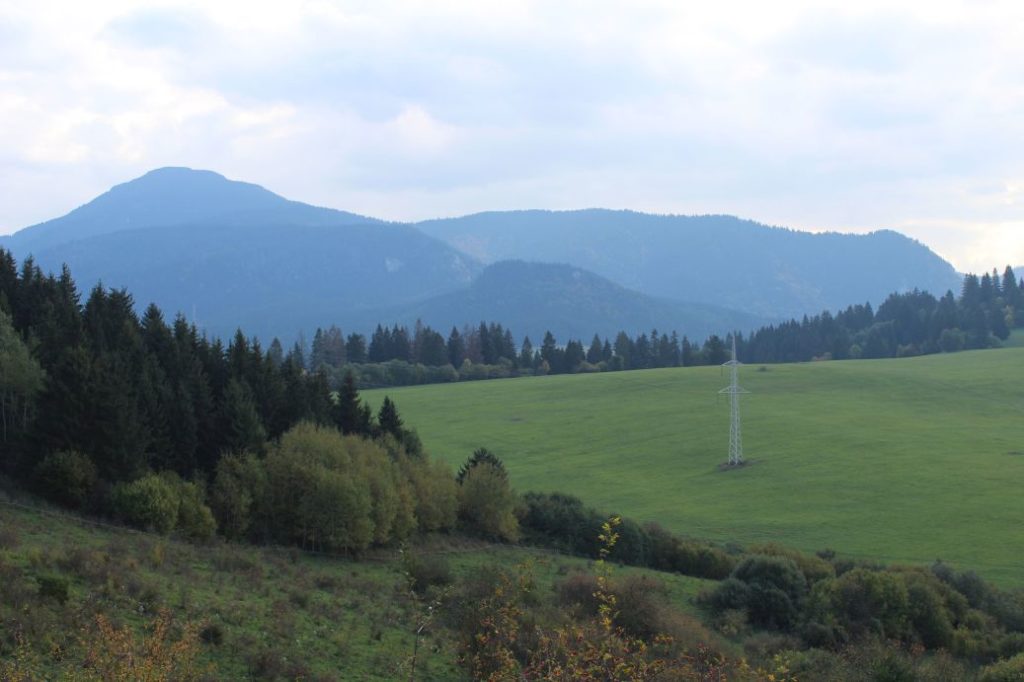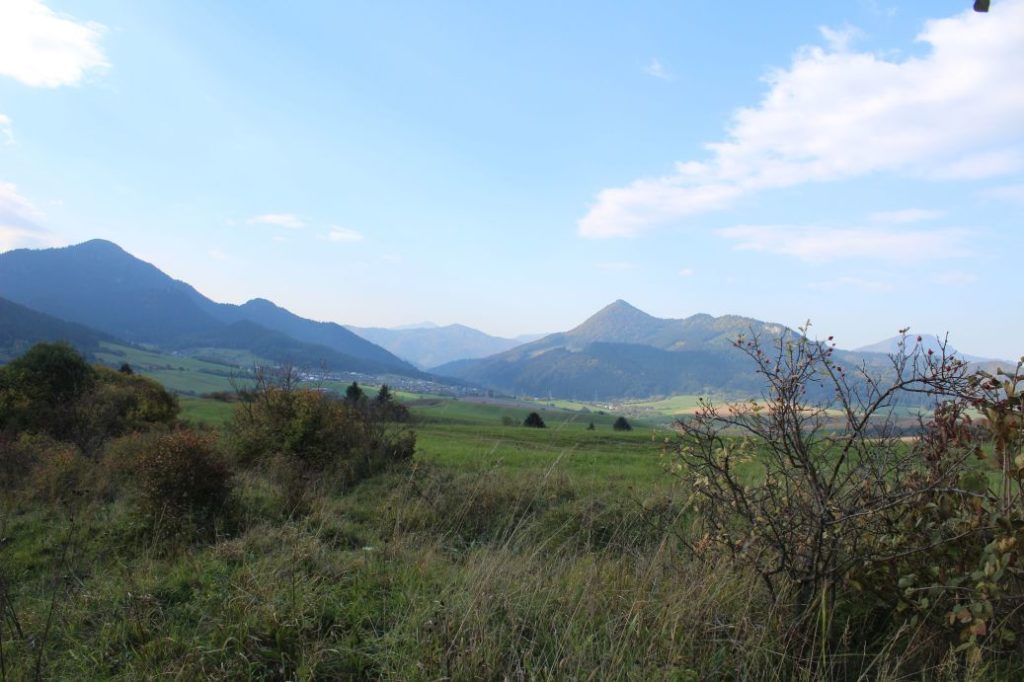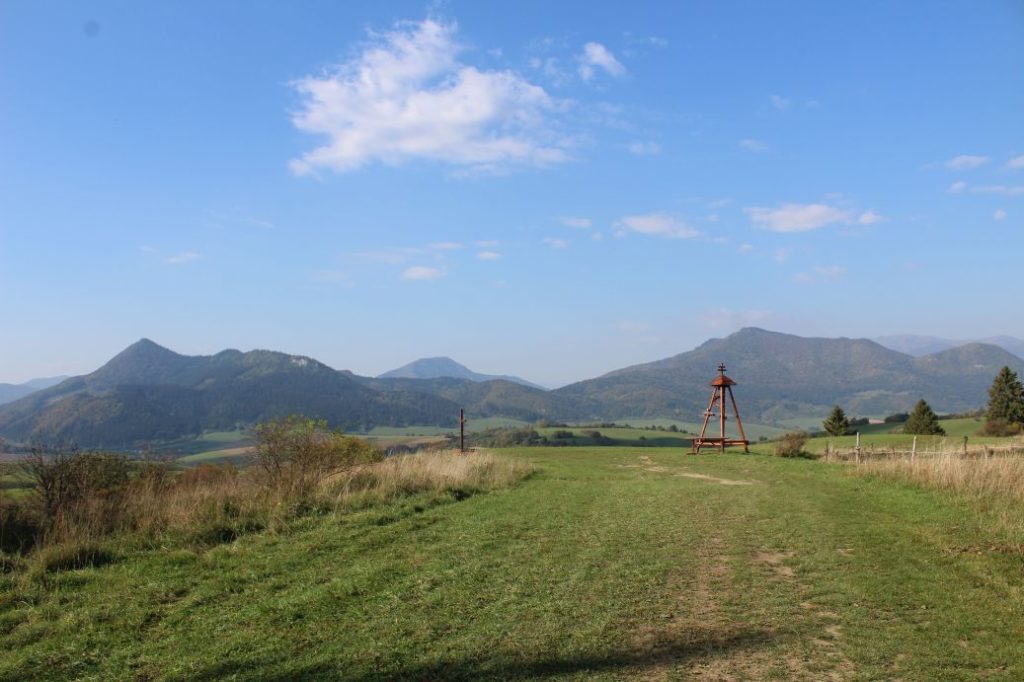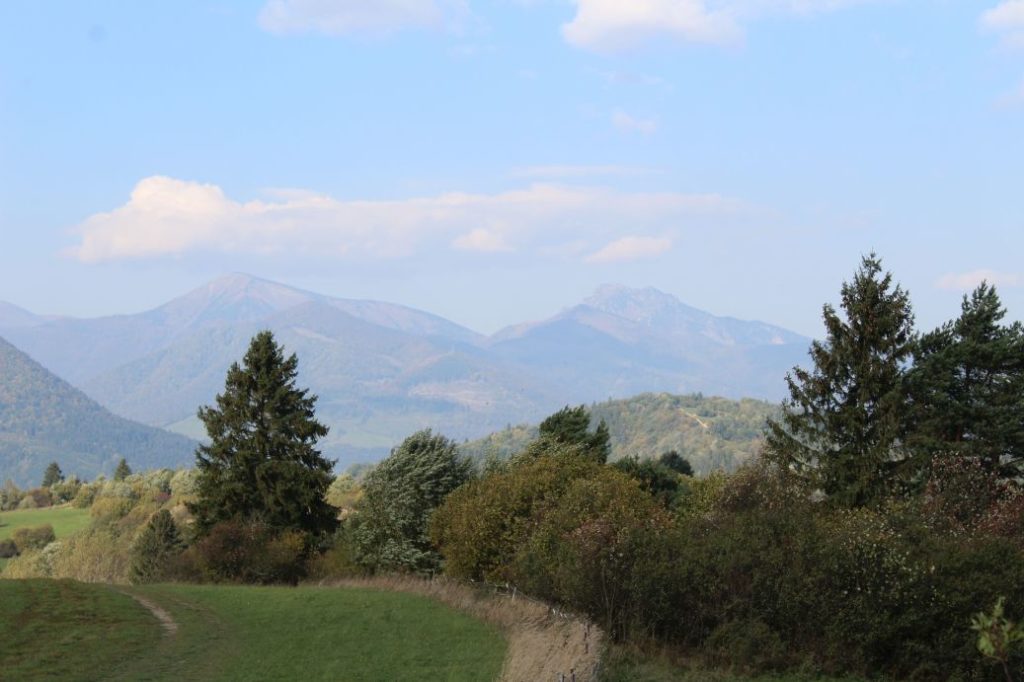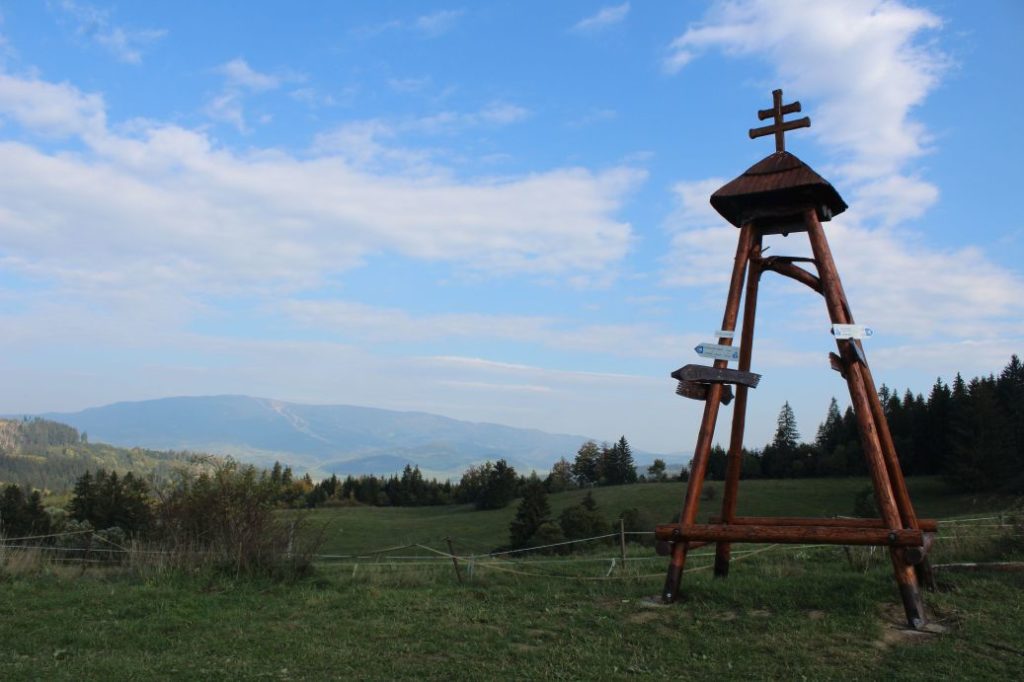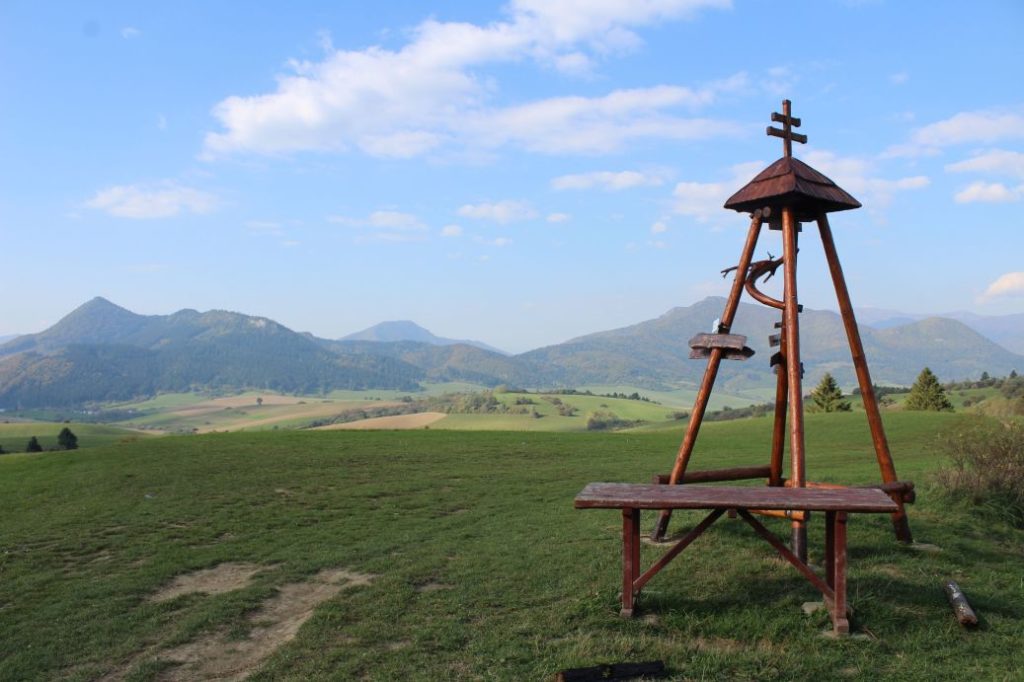Nature as Therapy: Four Land Districts, or a Hike in Search for Sloes.
On our third trip, we will visit the border of Ružomberok District and Dolný Kubín District, the village of Komjatná. We will enjoy lovely views and forage a few things nature has prepared for us.
We have put some thought into where we could hike in search for another edible plant available in nature in the autumn season. Finally, we decided for a location that is very little known, in which you will find hikers only sporadically.
Common Sloe, or Sloe Plum (sloe), is a bush, which grows almost everywhere, it likes calcareous soil and sunny locations. You will find it at balks between fields, at meadow peripheries, near creeks, wooded areas and roads. It does not mind cold weather and its thick shrub is often a refuge for birds. In addition to the flowers, which are picked from the sloe bushes in spring, you can also use the young leaves, the bark or the berries.
In autumn, the most interesting part of sloes are the berries, which can be used in several ways. The most usual way is to eat them directly on your hike. However, the berries are more suitable for consumption after the first frosts, when they become less sour, and even a little sweet. Sloes are suitable for consumption all the way until spring, as they are not in any significant way harmed by winter, but they do get a little shrivelled and dry. The berries of sloes are a valuable food, as they contain plenty of vitamins and minerals, which boost your immune system and the overall well-being. Other ways you can use sloes are drying them for tea, using them in apple – sloe jam, or distilling them. For its antibacterial effects, the mashed flesh of sloes is also used as an ingredient in cleansing face masks.
Sloes are found almost anywhere, but as with all herbs or berries, it is better to pick them away from populated areas or areas with traffic. Balks between fields and meadows in the surroundings of Komjatná meet these requirements, and that is why we chose to go there.
To get to the beginning of our hike, we ride a bus from the bus station in Ružomberok. The bus stop at which you need to get off is called “Komjatná,,Pod Stráňou“. Next to the bus stop, there is a signpost with hiking trails running in three directions. However, we will choose a narrow street running mildly uphill, which is not pointed to by any of the direction signs. The road will lead us to the top of a small hill with a wooden cross and a brick chapel situated behind the cross. This is where we can see the first views, which are going to accompany us all the way to our destination, which is located at a meeting point of four cadastral areas. We continue mildly downhill on the asphalt road, and at the next opportunity, we turn to a road to the left, still running downhill. At a nearby intersection situated on the other side of a creek, we continue uphill on a meadow along a field road running slightly to the right. After walking up to the ridge, we continue to the right, in the direction towards the poles of the high voltage line. In the vicinity of the poles, we come across the first fruit we can pick. The small rose hip bushes are situated along our route at several places and we may pick as many of them as we need. An indistinct path leads us further along the ridge, towards thicker bushes with sloes, for which we came here. We continue further on the ridge, which will lead us below the wooded peak of hill Hradisko, where we will see a wooden building. Situated by the building, which resembles a bell tower, is a sitting area and a cross. You will also see a marked bike trail passing through this area. Situated in the vicinity of this place are two points which mark a meeting place of three municipal areas. If we squint our eyes a little and connect these points, we will get the border of four municipalities (Komjatná, Žaškov, Jasenová and Oravská Poruba). The route from Komjatná to the border of the districts is about 3 km long, which is about an hour walk at a relaxed pace. The route offers lovely views of the surroundings and it is suitable for all age categories. Among other things, the views include peaks Ostré, Hrdošná Skala, Kečka, Kútnikov Kopec, Šíp, Osnica, Stoh, Great and Small Rozsutec, Kubínska Hoľa, or Great Choč, which is best visible from the bench we passed by a few metres before reaching the border of the districts. An attentive eye should also not miss rock Hlavačka, which resembles a human head and which is used as practice climbing terrain for mountaineers.
We return along the same route and in addition to sloes and rose hips, me can also pick the fruits of hawthorn, or hazelnuts, which, however, forgot to grow this year for some reason.
On our trips, we behave in a responsible way. We never leave anything behind, but always carry with us what does not belong in nature, as we notice it along the way, in accordance with the initiative of #ObjavUdržateľnéSlovensko (DiscoverSustainableSlovakia).
If you feel inspired by our trip, do not hesitate and take a hike to these little-known locations, where you may gather new strength and discover the charm of the nature in the surroundings of Ružomberok.
The text was prepared by Milan Kolčák and Ján Benčík from the Ružomberok Information Centre.
This is the third article of the article series with subtitle “Nature as Therapy”.
Published: 7.10.2021

